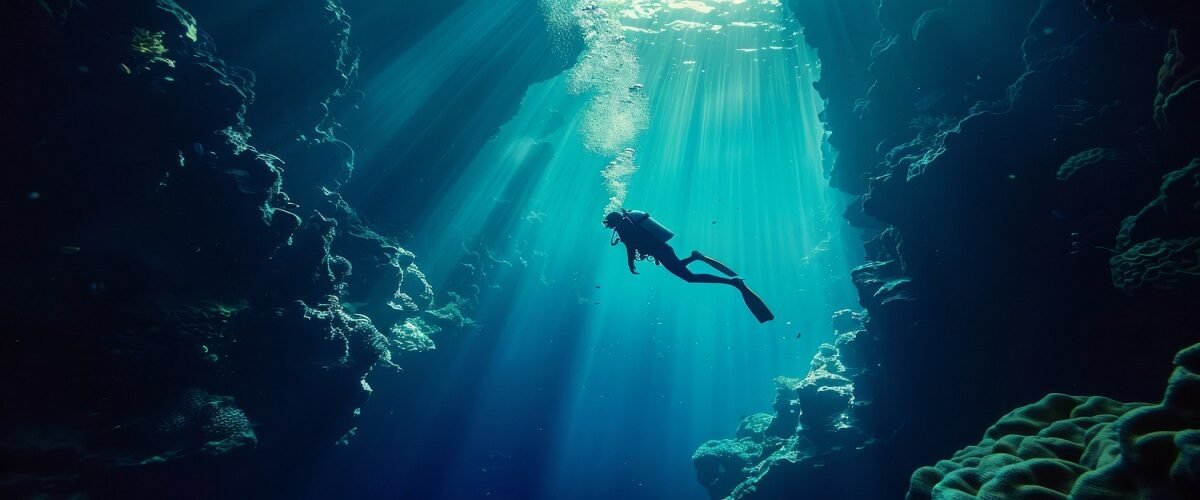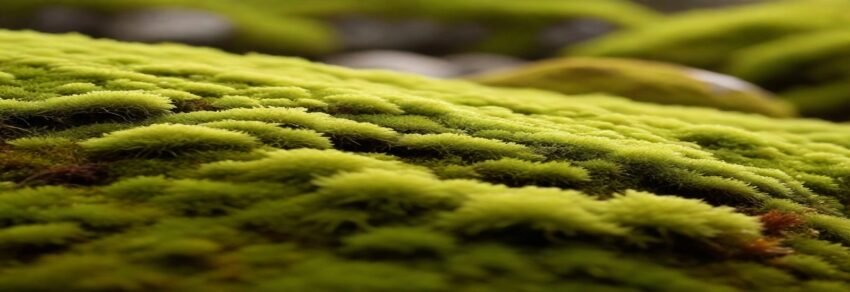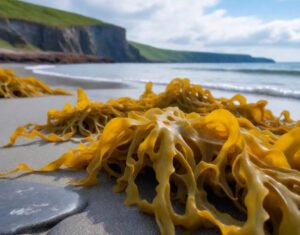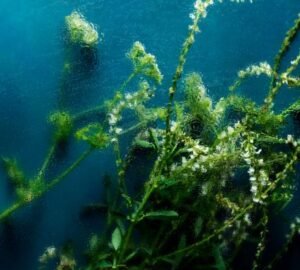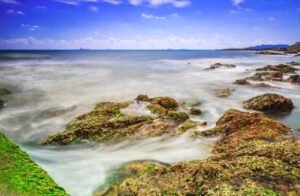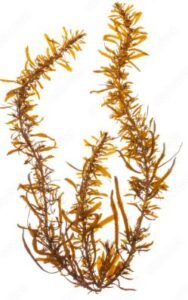Introduction
Seaweeds are thousands of species of macroscopic, multicellular marine algae. This term includes several types of Rhodophyta (red), Phaeophyta (brown) and Chlorophyta (green)
macroalgae. Seaweed species such as kelps provide essential nursery habitat for fisheries and other marine species, providing food security for marine life, while other species such as planktonic algae capture carbon and produce at least 50% of
Earth’s oxygen.
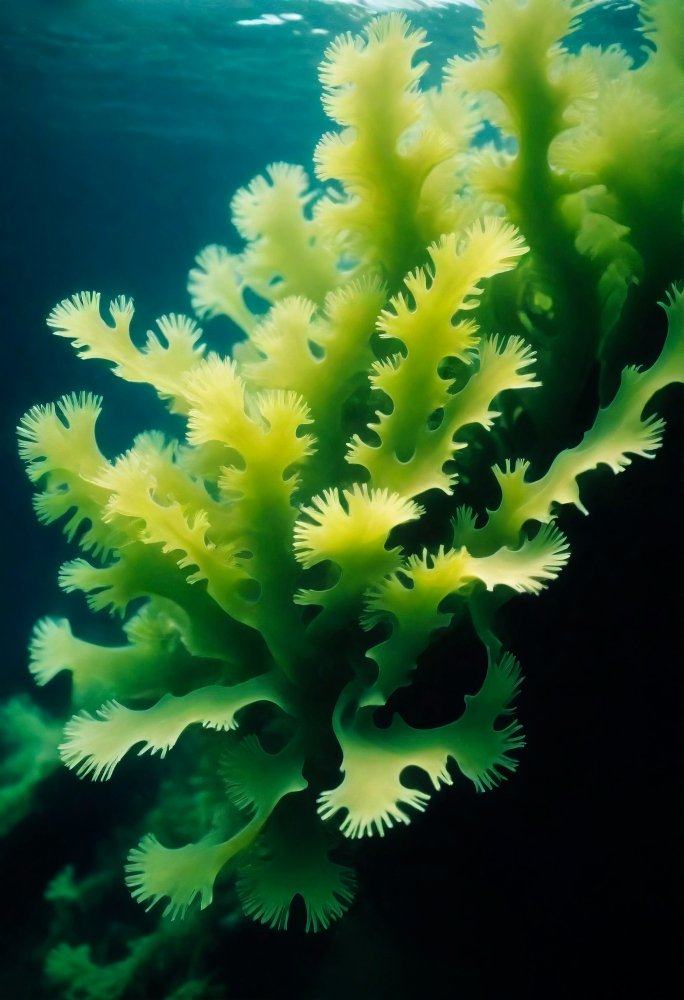
Seaweed ecosystems are sometimes threatened by human activities. For example, the mechanical mining of kelp destroys resources and fisheries. Various additional factors are involved. For example, a wasting disease of predators of purple sea urchins has led to an increase in sea urchin populations that have destroyed large areas of kelp forests off the coast of California. People have a long history of cultivating seaweed for their own use. In recent years, seaweed cultivation has become a global agricultural practice, providing food, source material for various chemical uses (such as carrageenan), cattle feed, and fertilizer.
Due to the absorption of carbon dioxide, the sea urchin is often used to breed
Taxonomy
There is no formal definition for “seaweed”, but seaweeds usually live in the ocean and are visible to the
naked eye. Refers to both flowering plants submerged in the ocean, such as large marine algae. Generally,
it is one of several groups of multicellular algae. Red, green and brown. In addition, there are blue-green
algae (cyanobacteria) seaweeds. The number of seaweed species has not yet been identified and there
are species of sea platy.
- The following table lists a very few examples of genera of seaweed
Caulerpa
Algae
Phylum = Green 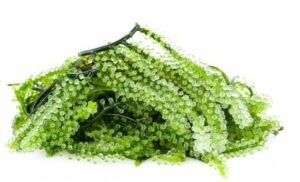
Fucus
Algae
Phylum = Brown
Remarks = In intertidal zones on
rocky shores.
Gracilaria
Algae
Phylum = Red
Remarks = Cultivated for food
Laminaria
Algae
Phylum = Brown
Remarks: Also known as kelp
8–30 m under water
and
cultivated for food.
Macrocystis
Algae
Phylum = Brown
Remarks = Giant kelp
forming floating
canopies.
Monostroma
Algae
Phylum = Green 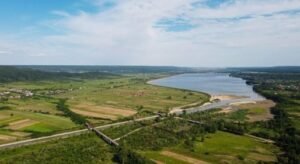
Porphyra
Algae
Phylum = Red
Remarks = Intertidal zones in temperate climate and
cultivated for food.
Sargassum
Algae
Phylum = Brown
Remarks = Pelagic especially in
the Sargasso Sea.
Seaweed’s appearance resembles that of non-woody terrestrial plants. Its anatomy includes.
- Thallus: algal body
- Lamina or blade: flattened structure that is somewhat leaf-like
- Sorus: spore cluster
- pneumatocyst, air bladder: a flotation-assisting organ on the blade
- Kelp, float: a flotation-assisting organ between the lamina and stipe
- Stipe: stem-like structure, may be absent
- Holdfast: basal structure providing attachment to a substrate
- Haptera: finger-like extension of the holdfast that anchors to a benthic substrate
The stipe and blade are collectively known as the frond.
More than 120 newly introduced seaweed species have been registered. It is the largest number in the
world
Ecology
Two ecological concerns dominate seaweed ecology. These provide sea water (or at least brackish water) and enough light to support photosynthesis. Another common requirement is an attachment point, so seaweeds are most abundant in littoral (near-shore waters), and within that zone, in addition, there are some free-floating seaweeds (e.g., Sargassum and Gracilaria) that are not attached to the seabed. Seaweeds occupy a variety of ecological niches. At the surface, they are wetted only by the tops of sea spray, and some species may attach to a substrate several meters deep. In some areas, coastal seaweed colonies extend miles out to sea. Others have adapted to live in tidal rock pools. In this habitat, seaweeds are adapted to withstand rapidly changing temperatures and salinities and occasional desiccation.
These macroalgal tributaries tend to be used by the benthos of the nearshore intertidal zone. Alternatively, pneumatocysts (gas-filled “bubbles”) may keep the macroalgae thallus afloat. From the coast to the deep ocean, parts of sea plants are transported by wind and currents. Benthic organisms up to 100 m have also been shown to tend to use these macroalgal remains.
Macroalgal blooms can contribute to ocean carbon sequestration because macroalgal blooms take up carbon dioxide and release oxygen during photosynthesis, and macroalgal blooms are washed ashore into deep ocean basins and sink to the sea floor without being remineralized by organisms.
Farming
(This section is an excerpt from Seaweed farming.)
Seaweed farming or kelp farming, is the cultivation and harvesting of seaweed. At its simplest, farmers harvest from natural beds, while at the other extreme, farmers completely control the life cycle of the crop.
The seven most cultivated taxa are Eucheuma spp., Kappaphycus alvarezii, Gracilaria spp., Saccharina japonica, Undaria pinnatifida, Pyropia spp., and Sargassum fusiforme. Eucheuma and K. alvarezii are attractive for carrageenan (gelling agent); Gracilaria is cultivated for agar; and the rest is eaten after limited processing. Seaweed differs from mangroves and seagrasses in that they are photosynthetic algal organisms and do not produce flowers.

Women in Tanzania grow “Mwani” (seaweed in Swahili). The farms are made up of little sticks in neat rows in the warm, shallow water. Once they harvest the seaweed, it is used for many purposes: food, cosmetics, fabric, etc.
The largest seaweed-producing countries by 2022 will be China (58.62%) and Indonesia (28.6%); South Korea (5.09%); and the Philippines (4.19%), followed by other notable producers, followed by North Korea (1.6%), Japan (1.15%), Malaysia (0.53%), Zanzibar (Tanzania, 0.5%) and Chile (0.3%). includes.[23][24] Seaweed farming has often been developed to improve economic conditions and reduce fishing pressure.
Country | tonns per year, cultured and wild |
China | 20,351,442 |
Indonesia | 9,962,900 |
South Korea | 1,821,475 |
Philippines | 1,500,326 |
North Korea | 603,000 |
Chile | 427,508 |
Japan | 412,300 |
Malaysia | 188,110 |
Norway | 163,197 |
United Republic of Tanzania | 106,069 |
The Food and Agriculture Organization (FAO) reported that world production exceeded 35 million tons in 2019. North America produced about 23,000 tons of wet seaweed. Alaska, Maine, France and Norway have more than doubled their seaweed production since 2018. As of 2019, seaweed represents 30% of marine aquaculture.
Seaweed farming is a carbon-negative crop with high potential to mitigate climate change. The IPCC special report on the
ocean and cryosphere in a changing climate recommend “further research attention” as a mitigation strategy. The World Wildlife Fund, Oceans 2050, and The Nature Conservancy publicly support expanded seaweed farming.
Other uses
Seaweed fertilizer and seaweed fuel
Other seaweeds can be used as fertilizer, as compost for landscaping, or placed in sea dunes to combat coastal erosion. Seaweed is considered as a potential source of bioethanol.
Alginate paper is used in industrial products such as coatings, adhesives, dyes, gels, and explosives, as well as in processes such as paper sizing, textile printing, hydro-mulching, and mining. Seaweed is an ingredient in toothpaste, cosmetics and paints. Seaweed is used for the production of bio-threads (textiles). Some of these resources can be obtained from seaweed through biorefining.
Seaweed harvesting involves collecting, drying and pressing seaweed. It was a popular pastime in the Victorian era and remains so today. In some developing countries, seaweed is harvested daily to support communities.
Author: :Samindya Rathnaweera

